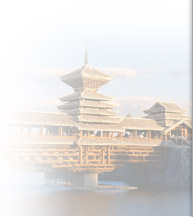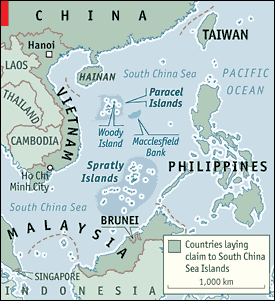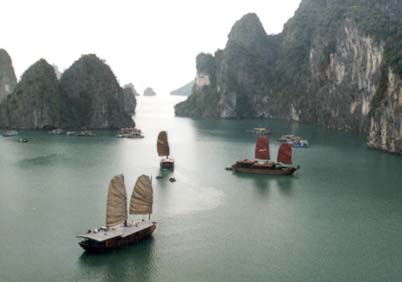My Travels in South East Asia
China Vietnam Cambodia Laos Thailand
News
China
Beijing Music
China
Voordelig naar China
Vakantie naar China
Reserveer een huur auto
Chinaonline.com
Geledraak.nl
Travelchinaguide.com
China map
China foto's
Attracties per stad
Over Chinese steden
Over SARS
China Forum
China.org.cn
Chinadaily.com.cn
Chinatoday.com
China Travel Service
Visit China
Accomodatie
Chinesehotels
Cnhotels
Travel-hotels-china
Gebieden en Steden
Beihai
Beijing
Dalian
Changsha
Chengdu
Chongqing
Dali
Dunhuang
Guilin
Hangzhou
Huangshan
Kunming
Lhasa
Lijiang
Shanghai
Shigatse
Suzhou
Tibet
Wuhan
Xi'an
Yangshuo
China pagina nl
China startkabel nl
China verzamelgids nl
China beginthier nl
Hongkong pagina nl
Chinatown pagina nl
Beijing pagina nl
Het weer in China
Thailand
Thailand
Vietnam
Vietnam
Vietnam
Voordelig Vietnam
Vietnam Reizen
Hotels in Vietnam
Vaccinaties
Holland Ha Lan
Red Light District
Wallentocht
Pictures Utrecht
België Bi
Ličge
Link aanmelden


Vietnam’s first cable car system over sea inaugurated
 Vietnam’s first cable car system Cap Treo over the sea opened in Nha Trang. The system links the resort town with Hon Tre island over three kilometers away.
Vietnam’s first cable car system Cap Treo over the sea opened in Nha Trang. The system links the resort town with Hon Tre island over three kilometers away.
The VND96 billion (US$6 million) telpher system, built by Vinpearl resort, has 48 cable cars, each able to carry eight people.
It takes nine minutes to travel across the sea and costs VND50,000 (US$3.1).
However, its opening is tinged with controversy. Last week a foreign cruise ship initially threatened to bypass Nha Trang after being refused permission to enter the port and asked to dock offshore. The vessel was told that at 50 meters it was a meter too high for the telpher system’s clearance.
The captain later relented and brought the vessel to the town.
To Nha Trang
Disputes in the South China Sea
Whale and Spratlys Dec 13th 2007 | BEIJING From The Economist print edition
Yet another cold-war revival
WITHOUT fanfare, China has created a colossal new city. It is called a city even though it barely has a population to speak of and consists mostly of water and desolate islands. It would be no more than a bizarre misnomer were it not that the affected area—a swathe of the South China Sea—has other claimants, too.
In recent years, China has become less strident in asserting its claims to sovereignty over islands in the South China Sea. In an effort to strengthen ties with wary South-East Asian neighbours, it has preferred to play down territorial disputes and stress the need for joint efforts to exploit the oilfields beneath the waves.
But wariness persists. Vietnam has been riled by what it says was a recent Chinese decision to upgrade the status of the organisation that China says is responsible for the archipelagoes of the Paracels and Spratlys as well as the submerged reefs of Macclesfield Bank (see map). The outfit in charge of these territories is located on Woody Island in the Paracels. Its jurisdiction is reportedly being relabelled as the “county-level city” of Sansha (an abbreviation of Xisha, Nansha and Zhongsha, China's names for the outcrops), part of Hainan province.
In deference to its neighbours' sensitivities, China has not publicly confirmed the action. But Vietnam made its point by tolerating rare demonstrations on December 9th outside China's embassy in Hanoi and its consulate in Ho Chi Minh City. The Chinese, having used similar tactics themselves during spats with other countries—notably Japan—would have got the message clearly enough.
Vietnam had already been piqued by China's staging of big military exercises in the South China Sea in November, close to the Paracels. China has controlled the islands since it drove out a South Vietnamese garrison in 1974. In the 1990s it extended the runway on Woody Island. In August China's state-run media said plans had been approved to develop group tourism on the archipelago. An official was quoted as saying this would be an important way of demonstrating sovereignty.
But neither China nor Vietnam wants to see their differences deteriorate, let alone to the level of 1979 when the countries fought a brief border war (occasional skirmishes continued into the 1980s, including one in the Spratlys in 1988). During a meeting in November in Singapore, China's prime minister, Wen Jiabao, told his Vietnamese counterpart that efforts to demarcate their land border should be speeded up. The new Sansha city embraces the Spratlys, where the Philippines, Brunei, Malaysia and Taiwan also have claims. But these contenders have so far kept quiet.
Tensions between the claimants have eased since China signed an agreement with South-East Asian countries in 2002 to resolve their disputes in the South China Sea peacefully. In the past couple of years China, Vietnam and the Philippines have been conducting an unprecedented joint survey of the South China Sea to probe its oil and gas reserves. This, however, is the easy part. When they eventually determine how big the reserves are, they will have to decide how to share them.
Train to TibetTrain to Tibet,Qinghai
Travel companies are hoping for profits as high as the Tanggula Mountains following the opening of the Qinghai-Tibet Railway.
Two tour groups organized by the branch of China Tourism Service in Hong Kong will travel to Lhasa in the next two weeks. The travel agent is organizing another 10 groups, which are expected to arrive in Tibet this month, according to deputy general manager Wu Xi'an.
The greatest obstacle for tour operators is the difficulty in getting train tickets, said a manager at Modern China Travel Service Ltd in Hong Kong.
In Beijing travel agencies are promoting packages that combine air and rail travel. Tourists are recommended to take a flight to Xining, capital of Northwest China's Qinghai Province, and go on to Lhasa on a shorter, 26-hour train ride. On the way back most agencies arrange to fly directly from Lhasa to Beijing.
"The train runs 48 hours from Beijing to Lhasa not many people have the time to do that twice," said Wu Wei at Beijing Gold Dragon Travel Service Co Ltd.
"If they make a stop in Xining, they can visit Qinghai Lake, the largest saltwater lake in China," she added.
Eyeing opportunity, travel agencies in Xining are preparing packages including both Qinghai and Tibet. "We have been receiving a lot of calls from around the country since Friday morning," said Ma, a guide at the branch of China Tourism Service in Qinghai.
"Those who called us all asked if we can get them a train ticket from Xining to Lhasa. We have never been so busy."
"It is a historic moment for Xining," said Zhang Zhizhong, a local schoolteacher. "Everybody is looking for it on the map. The city has never been as famous as it is today."
Source: China Daily
China to re-open sea tour to Ha Long BayChina is expected to re-open a sea tourism route from Beihai city,Guangxi Zhuang autonomous region to Ha Long Bay of Vietnam from the first day of Lunar New Year (January 29 2006).
 After nearly a year of interruption, China has decided to restore the tour route, reported the Radio Voice of Vietnam.
After nearly a year of interruption, China has decided to restore the tour route, reported the Radio Voice of Vietnam.
Beihai’s Tourism Department said the route would officially re-open on January 29 and a five-day sea tour from Beihai to Ha Long Bay would begin.
Tourists will travel on a luxury ship named “Princess Ocean”. The 8-storey ship is equipped with modern facilities. It is 140 metres long, 21 metres wide and able to carry 500 passengers.
The international route would contribute to boosting co-operation in tourism, trade and culture between China and Vietnam, said Beihai’s authorities.
Borders China Vietnam
Vietnam and China have some over land border crossings. The busiest one is Huu Nghi
at Dong Dang of Lang Son Province to
Pinxiang and Nanning on the Chinese side.
On the other hand, Lao Cai border crossing
to Kunming and Mong Cai Dongxing border crossing
to Guangzhou are also open to foreign tourists. From Mong Cai,border,there is a hovercraft connection to Halong Bay v.v.
China/Vietnam v.v. Mong Cai -Halong Bay by hovercraft..
There are two railways linking Vietnam/China
via Huu Nghi Hanoi Nanning and Lao Cai border gates, Hanoi Hekou Kunming. Buses run every
day from Hanoi to these border crossings
and the same on the Chinese side to cities. Other means of transport such as: bus, taxi,
Honda Om are available in each frontier
province to its border crossing.You will
need a Vietnamese/Chinese visa.
Read more here....
One night in Shanghai what would you do?

Or the better question is: What would you suggest a visitor to Shanghai do if they only had one night to spend in the city? (And, no, your first stop can’t be a travel agency so they can extend their stay.)
We ask because the June 5, 2006 edition of TIME Europehas a feature called — you guessed it — “One Night in … Shanghai.” Three “people in the know” told the magazine their suggestions. Here they are:
1. Chun
2. Mimosa
HAN FENG, Shanghai and New York City–based fashion designer
1. Face Bar
2. Restaurant 1931
3. House of Blues and Jazz
4. Dragonfly Spa
HANNAH BEECH, Shanghai bureau chief, >TIME
1. YongFoo Elite
2. Jishi (Jesse)
3. Cloud 9
OK, so it’s a silly question. Almost impossible to answer, especially when you don’t know the people for whom you are making the suggestions. But how can a venue on The Bund not appear on anyone’s list? Or is The Bund now verboten and they forgot to notify Shanghaiist? Anyway, off the top of our head, dinner at Chun is a good idea — if people are only in Shanghai for one night, they should eat some Shanghainese food. Maybe a quick post-dinner stroll is in order to help with digestion … how about window-shopping on Xinle Lu? Then it’s off to The Bund — drinks at either M on The Bund or New Heights. After checking out the view, we would check the local music listings and pick something that suits our mood. Jazz is usually a pretty safe bet in Shanghai. JZ? At this point in the night you may be getting tired … or you may be getting hungry again. Try either Dragonfly (massage, we’re partial to the oil variety) or Bao Luo (more Shanghainese food) … or, better yet, both — you can sleep after you leave Shanghai. (Hey, it’s not our fault you only scheduled one day here. Idiot. Don’t you know “Shanghai is the new Prague”? Seriously, we just heard that yesterday.)
So, what would you suggest to someone with only one night in Shanghai?
Photo by harlemdakota.
Photographs
Images of Asia - Some pictures of Hanoi.
See more here....
Pictures Vietnam - Pictures of Vietnam.
See more here....
Hanoi Pictures - Some more pictures fom Hanoi.
See more here....
Man’s best friend
by Pham Hoang Nam
Nguyen Van Bien has devoted nearly a decade studying Phu Quoc Island’s indigenous dog, famous for
its unusual physique, intelligence, and superb hunting and swimming skills.
 With international interest in the dog soaring, the university lecturer says the Government should
set up a national centre to monitor how the dogs are being raised by breeders,
many of whom are looking for profits on the world market.
With international interest in the dog soaring, the university lecturer says the Government should
set up a national centre to monitor how the dogs are being raised by breeders,
many of whom are looking for profits on the world market.
Bien believes their breeding methods will eventually destroy the natural characteristics of the rare dog.
Along with the Thai and Rhodesian ridgeback, the Phu Quoc ridgeback dog has webbed feet and is so named because of a two-centimetre wide strip of hair down its back that stands up when the dog is alarmed.
Many scientists postulate that the dogs belong to the same family, but no real proof exists of the dogs’ origins.
About 14,000 of the auburn-coloured dogs, which weigh from 16 to 30kg each, live on Phu Quoc Island, 45km off Viet Nam’s southwestern coast of Kien Giang Province.
Owned by many of the island’s farmers, the dogs roamed the island freely when it was heavily forested, but are now used mainly as guard dogs.
Bien, a lecturer in the Department of Animal Sciences at Can Tho University, began research on the dog after signing a contract with Kien Giang Province’s Science and Technology Department in 1996.

Although his primary interest is in preservation, he does not oppose breeders’ efforts to establish a trademark for the dog.
An international trademark would lend the dog the recognition that many say it deserves, and would also hike the selling price substantially.
The dogs sell on the domestic market for an average of US$60, but could sell for $2,000 each or even more with a registered trademark.
Some Thai ridgeback dogs, which have been recognised by international Kennel Clubs, fetch up to $20,000 each.
Large dog farms
Eyeing the financial potential, several breeders have set up dog farms in the last four years.
Le Quoc Tuan, 44, owner of the largest farm, Thanh Nga, is raising more than 400 dogs with four supervisors on an 8,000sq.m farm. Three other farms are raising from 50 to 100 dogs each.

My love for this animal began when I was a boy. Before April, I didn’t sell any of the dogs but my food expenses were too high, about $500 a month, and I had to sell about 100 puppies in the last six months, Tuan said.
Although Bien believes that large farms are not appropriate for breeding, Tuan says his farm preserves the natural habitat of the dogs by providing a large space for them to roam.
Tuan says that he gives special care to 75 dogs with special features, such as an unusually shaped
 ridge, tail or eyes. They live in an unfenced 1,900sq.m area but other dogs live
together in groups of five to 10 in fenced areas.
ridge, tail or eyes. They live in an unfenced 1,900sq.m area but other dogs live
together in groups of five to 10 in fenced areas.
Tuan has also created a separate area for pregnant female dogs, who under natural conditions usually travel to a forest, dig a hole and care for their puppies for a month after giving birth.
He has plans to sell the dogs to locals and foreigners, and will spend two months training them so they can live under different conditions.
Tuan says he will teach them how to live in a confined space and will provide guidelines for customers on how to take care of the dog.
But Bien says many dogs sold to mainland residents have died because they were unaccustomed to the climate, water and the smaller living spaces.
State help

Though Bien does not oppose an international trademark, he believes the dogs should not be raised on large farms but with local households in smaller groups of two to three in a more natural habitat.
The dogs will be able to retain their special skills as well if they grow up with farmers, who can take them on hunting trips and let them swim in the sea or rivers, he says.
A national centre set up on the island could offer advice, medical check-ups and more to owners or breeders.
There is currently no State government agency protecting the dogs, but the dog farms have begun selling them in large numbers," Bien says.
This will affect the quality of the next dog generation," he says. "To preserve the dog as it is now, we need close co-operation between State offices, farmer households and scientists. We can’t do it alone.
But Tuan, the dog breeder says he too is protecting the dog.I think my farm contributes to preservation because it has natural and wild conditions.
Nguyen Hong Cuong, chief of Phu Quoc island’s Agriculture and Rural Development Department, says he does not know the best way to preserve the dog.
But I think dog farms like Thanh Nga are protecting the Phu Quoc dog. Many local residents aren’t even aware of how special they are and kill and eat them for food. The farms give them shelter Cuong said. — VNS
Cambodia
The new road Trat -> Koh Kong is finished and the bridge over the river from Hat Lek to Koh Kong is yet ready. I was not in time to catch the 8 o'clock morning boat to Sihanoukville...
Read more here....
Laos Story
During my boat travel from Luang Prabang to Vientiane I fell overboard in heavy rains and storm.
Nearly I became victim of Thuy Tinh, the Maekhong Waterdevil. All my luggage disappeared in the...
Read more here....
From Beijing to Saigon
De taxi chauffeuse die me oppikt buiten het luchthaven gebouw van Beijing kent drie woorden Engels, Taxi, pay en money. Dat schiet aardig op vooral omdat mijn Chinese kennis beslist ook niet verder reikt dan dat en zeer gebrekkig is.
Verdere informatie krijg ik niet van haar. De meter van de taxi kan wel verder tellen dan drie Yuan, 225 ongeveer 45 gulden voor ca 60 km. Vrij duur. De airport bus naar Beijing stopt ergens in het centrum en ik weet niet of je dan makkelijk bij mijn hotel kunt komen, daarom dus maar de taxi....
Read more here....
Miljoenen bedreigd door hoog water Chinees Dongting meer.
De Chinese autoriteiten hebben de noodtoestand uitgeroepen in de centraal gelegen provincie Hunan, waar miljoenen mensen worden bedreigd door hoog water. Een van de grootste meren van China, de Dongting, dreigt door zware neerslag buiten de oevers te treden en de streek te overspoelen. Door het uitroepen van de noodtoestand kunnen de autoriteiten een groot aantal mensen inzetten om de dijken te versterken. Ook kan de plaatselijke bevolking sneller worden geëvacueerd.
Het meer van Dongting vangt het water op van een groot aantal rivieren, waaronder de sterk gezwollen Yangtze. Bij een eerdere overstroming, vier jaar geleden, kwamen vierduizend mensen om het leven. En juist door de provincie Hunan reis ik binnenkort.
Read more here about Chongqing, Yangtze....